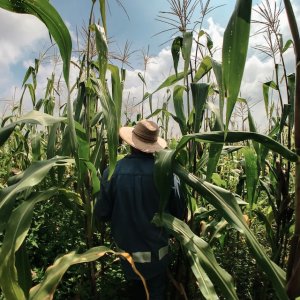Cricket Protein in Shrimp Diets: Why Bother?

STORY INLINE POST
Proteins of animal origin refer to all types of protein with high biological value that come directly or indirectly from an animal, such as meat, fish, milk, and eggs. These are highly consumed since they contain a high amount of essential amino acids, which are important to have in our diet for nutritional health (Cervera 2019). Due to this, the use of proteins has been diversified over many years, both for human and animal consumption, and in some cases they are cyclical.
Animal proteins for cyclical use refer to proteins obtained from the slaughter of certain animals, which are then consumed by other animals, either directly, as part of their diet, or indirectly, as supplements, in whole or transformed compositions as part of providing balanced meals (Luna 2017). Chicken, beef, pork, fish, and squid protein or meal are some of the proteins that are most well known when talking about proteins administered to animals whose approach is productive, followed by others that are less used, such as bone meal, shell meal, or even oils. All these products of animal origin, believe it or not, are part of the diet that we supply to our pets or even to cows, pigs, chickens, fish, shrimp and other animals, which many of us eat (Ramos 2020).
These by-products or secondary products obtained from processing the remains of farm animals are used in mixtures to prepare balanced feed, of different names, which is fed to animals during the different stages of life (Cervera 2019). From your dog's favorite foods to stage 1, 2 or 3 shrimp feeds, they all eat protein of animal origin, and in some cases, plant-based, although that's another topic.
For example, in the shrimp industry, two of the essential proteins that are usually used are fish and squid meal, which are obtained by processing all kinds of waste from large companies and adding them to the formulation of feed for these animals. But why is this important? Just focusing on this industry, about 55% of the shrimp consumed worldwide comes from aquaculture activities (WWF n.d.; Fletcher 2021). This 55% is fed with fish or squid meal. Of this number, in Ecuador, about 362,873 tons of shrimp have been generated per year since 2016 (Piedrahita 2018). Compared to the consumption of annual food resources, this means that fish or squid protein is consumed by the tons within this industry, but is it the best option?
Despite being a traditional practice and product used for decades, it is currently highly questioned. Why? Mainly because it is an option that is no longer widely accepted due to the environmental impact generated by fishing to obtain fishmeal. Many of the fish used for this are the product of bycatch, at low costs and of various species, not all of them commercial (NOAA 2016).
Thanks to this, proteins such as crickets have made their way onto the consumer market, not only for humans, but also for animals. Cricket protein, which helps to provide enriched and balanced formulas, also helps to mitigate the consumption of these proteins in the diet of animals for human consumption (Awaysheh & Picard 2022). But, what is the difference between cricket meal and fish or squid used in the shrimp industry?
Let's start with the protein per serving comparison. A portion of 1,000 grams of fishmeal has about 18-20% of pure animal protein, and can rise to 60% when mixed and ground with different parts of the animal and other products of plant origin, such as soybeans. This is similar to squid, which can reach up to 72% protein when mixed with other products (Solà-Oriol 2020). On the other hand, cricket flour, without mixing it with any other product, already reaches 69% protein (Hoppa 2022), which is why it is classified as a super-protein, since it doesn't depend on other products to increase its percentage of protein. When added to the percentages of calcium, iron, essential amino acids and other nutritional components, the cricket becomes an attractive opponent for these seafood products (Bernier 2019).
But, if the percentage of protein is similar and even lower when not enriched with another product, why should the substitution of fish and squid meal in shrimp diets be important? The answer is contingent on your environmental impact, since protein percentage isn't a very big differentiator. Although we have already talked about why the use of these traditional flours is falling out of favor, many companies, groups, organizations and consumers in general are also beginning to bet on "cleaner" and eco-friendlier products (Fletcher 2021). These products are raised in controlled environments, or farms (Solà-Oriol 2020), without damaging ecosystems, such as the sites where the fish are collected to make the traditional flour. In addition to this, the costs of extracting from these sites, damaging them, are much higher than those of maintaining a farm in a controlled environment, since food, water and other necessities that crickets require to live, represent a low production cost, in which the occupied space is also much lower. Therefore, although we can find similar percentages of protein, how each one is produced gives added value to the cricket, which is why it is appropriate to start substituting it, in certain percentages, until the extraction activities to produce fish and squid meal are reduced to a minimum (WWF n.d.).
Although we know that this will be a difficult task in the short or medium term, at CRICK Superfoods, we believe we can change or reduce the consumption of traditional proteins. We see beyond the importance of price and placing impact, not only social and nutritional, but also environmental, above the traditional activities of our society. We are already doing it. What are you waiting for to start?
(In collaboration with Carlos Picho-Paucar)
























